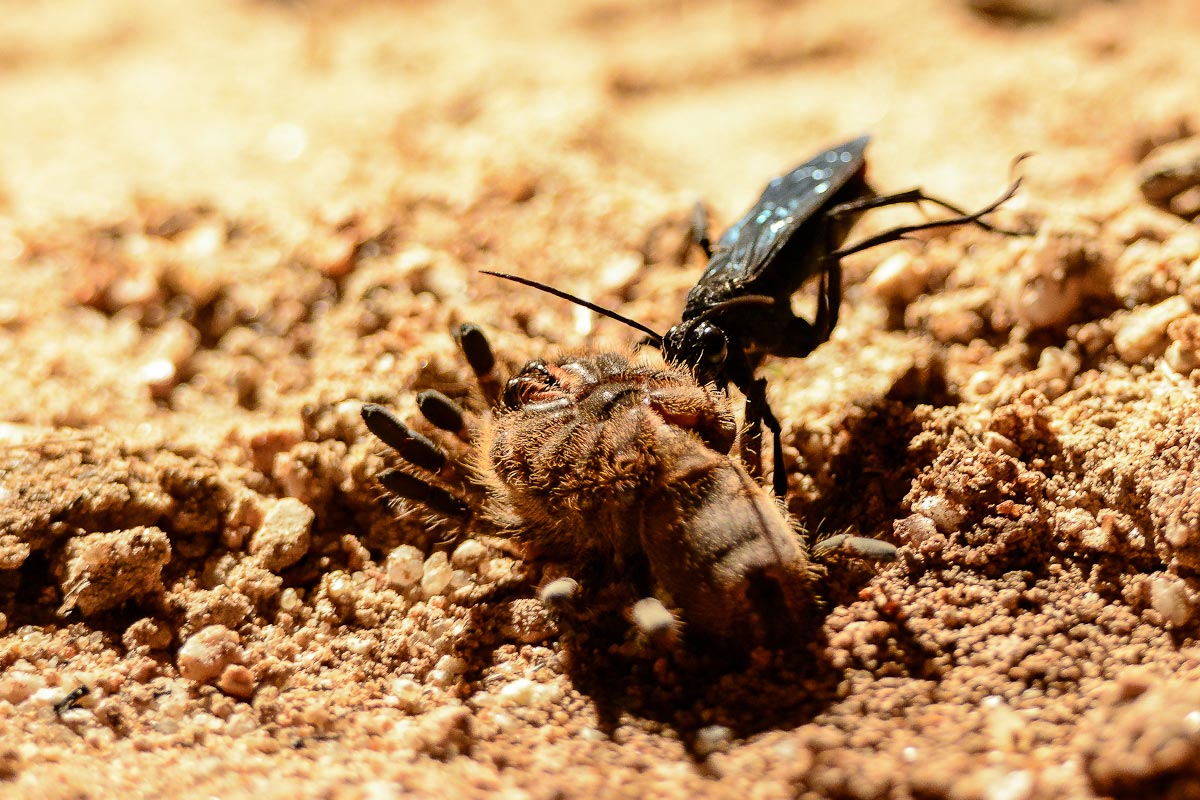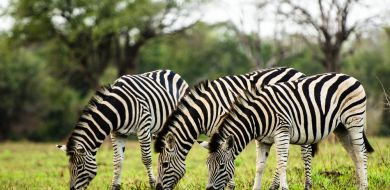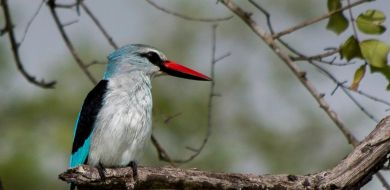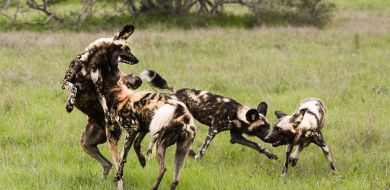Sabi Sabi Wild Facts: Spider Hunting Wasp
on Dec 15, 2014Spider hunting wasps belong to the family Pompilidae, and are found all over the world. There are around 4200 various species of this wasp, with 6 families in South Africa alone. The name of the wasps refers to their unique behaviour of hunting spiders, but in all other respects they are harmless and non-aggressive.
The spider hunting wasps are easy to identify. They are mostly black, with, depending on the species, conspicuous orange, red, yellow or white aposematic markings which deter predators from eating them. These long-legged wasps are found in an assortment of sizes, from a dwarf 10mm up to a staggering 50mm. It is difficult to differentiate between the sexes, although the female wasp is often larger than the male.

All species of spider hunting wasps are solitary, and most species will paralyse their prey after capturing it. Being solitary these wasps don't colonize; they nest alone in crevices or burrows. Although they have the ability to fly well, they spend much of their time running around on the ground searching for prey under rocks and leaves.
These wasps have powerful venom which is used to paralyse the spider which will become host to a wasp larva. Although spiders are well equipped to defend themselves, the spider hunting wasps have their great agility and mobility to thank for their success in hunting. The wasp overwhelms the spider with a single poisonous sting before dragging its live but immobilised prey to a generally pre-prepared burrow. The wasp then lays a single egg on the spider's abdomen, exits the nest and closes it - after which it will conceal the entrance.
The size of the spider's prey will determine whether the wasp will lay an egg that develops into a male or female. Larger spiders will be host to future female wasps, and smaller spiders to male wasps. The egg will hatch after about 10 days, at which stage the larva will feed on the edible parts of the live, paralysed spider. After consuming the spider, the larva spins itself into a silk cocoon, remaining dormant until the correct temperature and humidity stimulate pupation and it emerges as an adult.
The next time you see a scary-looking, long-legged wasp running backwards and forwards on the ground, look carefully - it may be a spider-hunting wasp searching for its next victim.






